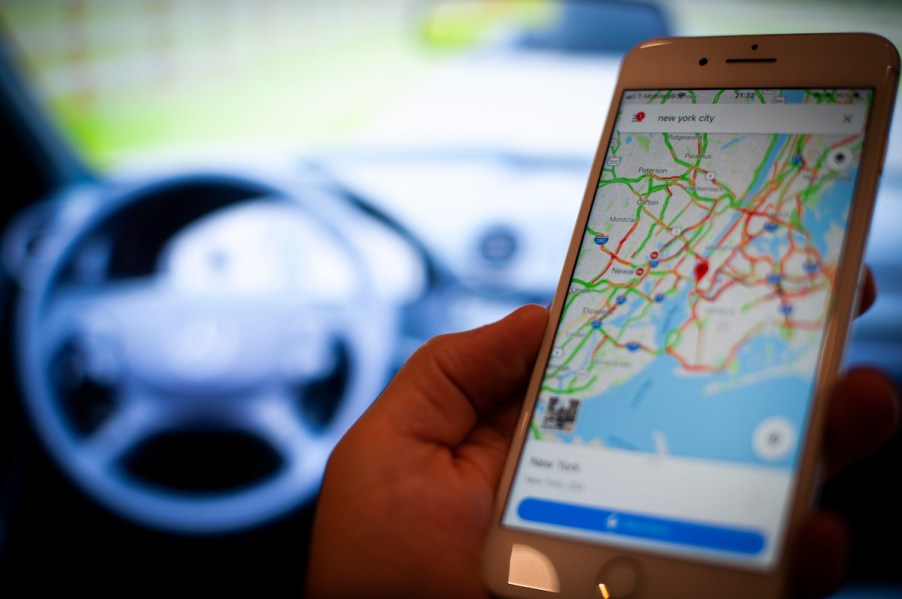
How Do I Know if My Car Has Android Auto?
It’s not uncommon for car buyers not to know about every feature in their new vehicle until after they purchase it. And in some cases, shoppers might hurriedly sign on the dotted line before fully understanding a car’s tech. But because smartphones organize or enhance most aspects of our lives, it’s good to know if your vehicle and phone can connect. That’s why Android phone users might ask, how do I know if my car has Android Auto? If you’re unsure, here’s how you can easily find out.
How to find out if your car has Android Auto and connect to it

Android Auto is software that allows you to seamlessly connect your compatible Android phone to your car’s infotainment system. Once connected, you can control many standard car functions with it. It typically overrides the native software that controls vehicle functions, such as call-taking via Bluetooth and navigation. Further, by using Android Auto’s voice command function, you can avoid having to fiddle with your phone or touchscreen and minimize your risk of car accidents due to distracted driving.
You can connect to Android Auto by downloading the app onto your compatible Android phone and then connecting a USB cable to your car and your phone. Dialog boxes will pop up on your phone and car’s infotainment screen. Your phone’s dialog box will ask if you give your car’s onboard computer permission to access your phone, and your car’s computer will ask if you give your phone permission.
Once you’ve allowed each permission, Android Auto will automatically activate. If your phone is Bluetooth-compatible, you can enable it on your phone and then search for your car’s computer to pair the devices. Once you pair them, you’ll get the same prompt for permission and can initialize Android Auto once you grant it.
But if Android Auto is not showing up in your car when you initialize your infotainment screen, your vehicle might not be compatible. In the last section, you’ll find out how to add it to your vehicle if you don’t have it. Or there might be a problem with Android Auto, which we’ll cover next.
Why is Android Auto not showing up in your car?
Sometimes, Android Auto will not automatically launch when you connect your phone to your car. But that doesn’t mean your vehicle isn’t compatible. Try starting or restarting your vehicle’s infotainment system. You’ll need to check your owner’s manual for how to do this because the steps vary depending on the vehicle. You can also try restarting your vehicle. Turn it off, wait a few minutes, and then turn it on again. Doing so and then connecting your phone might fix the problem and cause Android Auto to start automatically when you connect.
Or you might have a faulty USB cable. They don’t last forever, and connectivity problems ensue when cables begin to break down. Replace your USB cable with a high-quality one, not another used one or one you found at the dollar store. Also, the ideal cable is less than six feet long and can be used for both charging and data transfer. Using a new one might solve the problem.
In addition, clean the ports in your phone and car. A buildup of dust and debris could cause Android Auto initialization problems. Take a look at your car’s port using a flashlight, and use a toothpick or cotton swab to clean it if necessary.
If that doesn’t work, check your phone’s settings. You’ll find a list of previously connected cars, which shows a list of vehicles you’ve approved or rejected permission to connect with your phone. It’s possible that in trying to set up Android Auto, you might have inadvertently rejected it. If so, you’ll need to remove your vehicle from the list of rejected cars.
Also, you can check if your vehicle is Android Auto-compatible through the Android website.
How do you add the feature to an older car?
Despite Android Auto being relatively new software, you can add it to vehicles manufactured before its introduction. You can do this in one of two ways.
The first is to connect your phone to your car via Bluetooth and then launch Android Auto on your phone. You’ll want a dashboard mount for your phone, which will serve as your infotainment screen. It might not be as nice as a Tesla Model S’s 17-inch screen, but it’ll do the trick.
The second way is to purchase and install an aftermarket head unit. You can find one at an audio shop or online retailer. Ensure that the head unit you choose is compatible with your vehicle and that you identify other compatible accessories, such as speakers, you might also need.
As you conduct your research, you might encounter what’s known as a “double DIN unit.” This type might be best for your vehicle because it’s typically configured to connect easily to new software apps such as Android Auto and aftermarket automotive tech gadgets like backup cameras and touchscreens. You’ll likely pay $200 to $600 for such a system. But if you can find one that works with your car’s make, model, and year, it’s likely your best bet.
Make sure you shop around and ask a few professionals what they recommend, especially if you want to add more than just Android Auto functionality to your older car. You don’t want to spend several hundred bucks on a DIN head unit and several hundred or a thousand dollars more on tech only to realize you can’t integrate all your components seamlessly with your vehicle.


